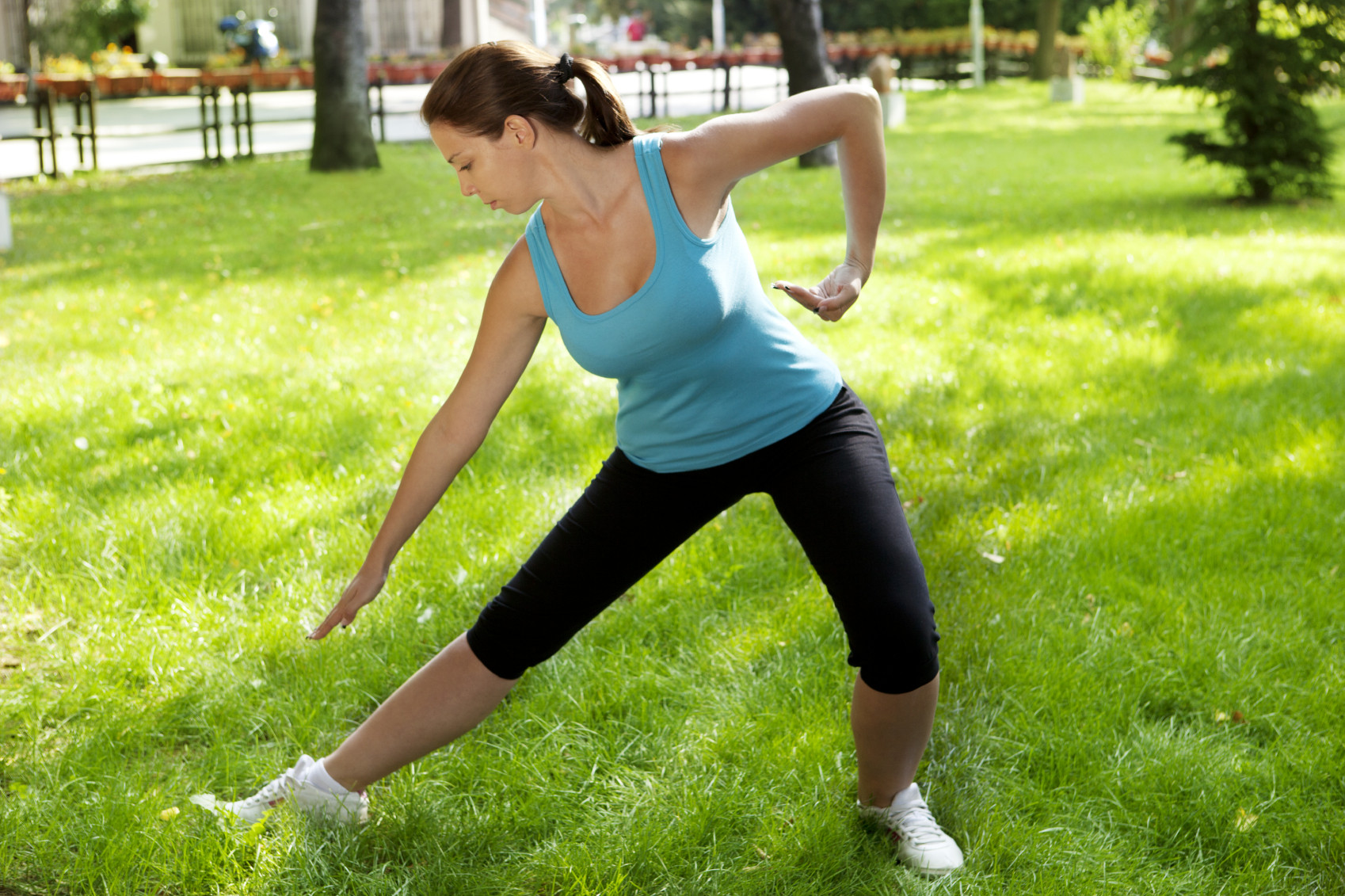Tai chi can improve life for people with chronic health conditions

Last summer, I practiced tai chi with my 83-year old mother at the senior center near her home. The hour-long class helped me realize why this flowing, meditative practice is an ideal exercise for older people with health issues. My mom is doing well, but she has osteoporosis and had a heart valve replacement a few years ago.
Practiced for centuries in China, tai chi has become popular in the United States in recent years, thanks in part to the growing evidence for its many health benefits. Not only does tai chi improve balance and flexibility, it may prevent falls, ease pain, and even help your heart.
Like walking, which can be leisurely or brisk, tai chi is easily adaptable. You can do the gentle movements sitting on a chair or standing up. You can repeat the sequences of movements to gradually strengthen your muscles. Like yoga, tai chi stretches your joints and connective tissues. But you don’t have to get down on the floor — a boon for people with limited mobility. And similar to yoga and meditation, tai chi also encourages deep, slow breathing.
As I wrote in the September Harvard Heart Letter, hundreds of studies dating back to the late 1950s suggest that tai chi offers modest benefits for treating high blood pressure and other heart-related conditions. The latest research, published online in the British Journal of Sports Medicine last week, suggests that doing tai chi can help older adults with common, long-term health conditions move about more easily and enhance their quality of life.
Researchers analyzed data from 33 studies involving nearly 1,600 adults. Most were in their 60s or 70s and all had one or more chronic conditions: osteoarthritis, breast cancer, heart failure, or chronic obstructive pulmonary disease (COPD), a serious lung condition that includes chronic bronchitis and emphysema.
All the studies were randomized and controlled: they compared people who did tai chi with those who either did another type of exercise or were waiting to join a tai chi class. Over all, people who did tai chi showed greater improvements on a six-minute walking test, in muscle strength (measured by bending and stretching the knees), and in quality of life. People with osteoarthritis didn’t reap as much in terms of strength as those with other conditions, but their pain and stiffness improved. And people with COPD who did tai chi noted less breathlessness.
The quality of life improvements may stem from the meditative, mind-calming aspects of tai chi, says Peter Wayne, assistant professor of medicine at Harvard Medical School and author of The Harvard Medical School Guide to Tai Chi. “Tai chi integrates physical activity, breathing, and a variety of cognitive skills, including imagery and visualization,” says Wayne.
In fact, that’s what I found most helpful about tai chi, which is often called “meditation in motion.” During a class, the teacher guides you through a series of slow-motion postures with evocative descriptions, like “grasping the sparrow’s tail” and “waving hands like clouds.” Instead of mentally scrolling through my to-do list (as I’m prone to during regular meditation), I was able to stay focused yet relaxed. I also noticed the sense of camaraderie among the people in my mom’s class. That’s another reason that doing tai chi classes tends to improve people’s quality of life, says Wayne.
The best way to try tai chi is to take a class at a senior or community center, health club, or hospital. Of the 58 academic health centers throughout the United States that have integrative health programs, many offer tai chi classes. Tai chi is also incorporated into many cardiac rehabilitation programs, including those affiliated with several Harvard teaching hospitals. And many assisted living facilities offer tai chi classes free for their residents.
Classes typically cost around $15. Wear loose, comfortable clothing, and supportive shoes like sneakers. Or you can go barefoot, if you prefer. If you can’t locate a class that’s convenient for you, you can buy a DVD, or search online for a video.
About the Author

Julie Corliss, Executive Editor, Harvard Heart Letter
Disclaimer:
As a service to our readers, Harvard Health Publishing provides access to our library of archived content. Please note the date of last review or update on all articles.
No content on this site, regardless of date, should ever be used as a substitute for direct medical advice from your doctor or other qualified clinician.












